Read Reviews
The Best Garden Spades
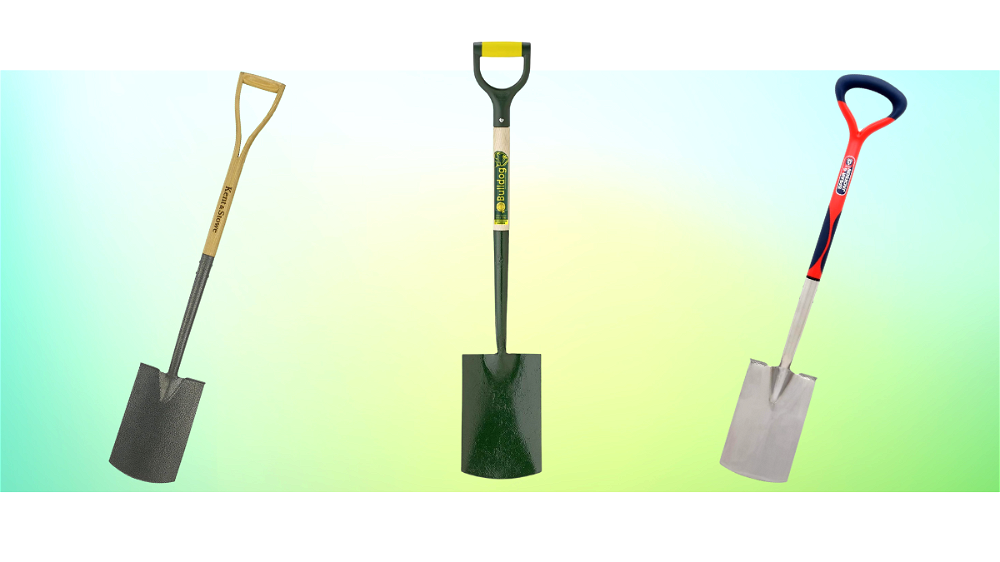
-
Spear & Jackson Digging Spade
-
Bulldog Evergreen Digging Spade
-
Wilkinson Sword Digging Spade
-
Kent and Stowe Carbon Steel Garden Spade
Garden Spade Reviews
- Shaft feels especially strong and whole spade has a robust feel
- Comfortable, ergonomic polypropylene handle
- Good rust resistance - provided it is well-maintained should last a long time
- Tough enough to deal with rocky ground and cutting through shrub roots
- Blade may bend if forced into very hard ground
- Unsuitable for very heavy-duty digging jobs
- Best stored inside as rain can get inside the handle
- Due to the tilt in the handle, digging neat holes deeper than the depth of the blade head is difficult
Finding quality tools at a sensible price doesn’t happen as often as it should. However, this Spear & Jackson Digging Spade is both well made, and reasonably priced, which makes it a great addition to the garden shed.
This spade isn’t a budget item, but fits neatly into the ‘mid-range’ price category, bringing the quality you would expect as a result.
With a head made from mirror-polished stainless steel, it stands up to a lot of digging as well as all the other challenges you would hope for: hacking through shrub roots, working through rocky ground, and digging out small tree roots too.
The 70 cm polypropylene shaft is also strong, with a wide-grip handle that’s comfortable to hold. It’s relatively lightweight compared to a lot of garden spades, at 2.18 kg, as a result of the construction materials used.
There are some design features that receive mixed reviews: the spade has been manufactured with a tilted handle that helps with shallow digging, but this design can make it a little difficult to dig deeper than the top of the spade head. Also, the blade head may also flex slightly, if over strained.
However, overall, this is one of the best garden spades for standard gardening. It’s strong and comfortably designed, suitable for use over extended periods. The only thing to watch out for is to not push it beyond its limits: it’s a spade, not a shovel, after all.
Did you find this review helpful?
- No weak points as head and socket are made from one piece of metal
- Sufficiently heavy duty for tough garden work like removing old roots
- Made at a UK-based foundry in Wigan
- Anti-slip grip on handle makes it easy to hold
- No treads on spade head so robust footwear will need to be worn
- Paintwork may chip over time
Bulldog have a good reputation for creating heavy-duty tools straight from their forge in Wigan. Their Evergreen Digging Spade is a durable tool with several design features that help make it particularly strong.
Unlike a lot of spades, its head and socket are made from one solid piece of forged steel – there are no welds or weak points where the pieces join. This makes it more robust than other models where this isn’t the case. And, as a result, it can tackle tough soil and overgrown roots in the ground.
In addition, the spade’s ash-wood shaft buries deep into the extra-long socket. Again, this helps make it hardwearing; the join is strongly reinforced and less resistant to snapping.
It’s also relatively light weight, at 2.16 kg, and has a grippy D-shaped plastic handle making it comfortable to use. The blade head is coated to stop mud from sticking, keeping cleaning and maintenance to a minimum.
Whilst this is one of the best garden spades for heavier jobs, there’s no tread on the top of the blade to make it more comfortable to push down on, which means heavy-duty shoes also need to be worn if tackling tough terrain.
Nevertheless, it’s a great tool for any garden job, and has the strength to make tough tasks a lot easier. Plus, there’s the added reassurance of knowing exactly where it’s been made.
P.S. Did you know – Monty Don’s favourite spade was made by the Bulldog Foundry in 1990.
Did you find this review helpful?
- Narrow head makes it easier to dig precisely in more confined areas
- Has a tread edge on both sides of the head for left and right-footed users
- Slides easily into heavy soil including clay-based soil
- Overall construction is strong and robust
- The handle is not very wide and some gardeners may find it uncomfortable especially with gloves
This Wilkinson Sword Digging Spade isn’t just aesthetically pleasing, even though the traditional wooden handle does make it a visually-appealing addition to the shed.
It’s also hardwearing and comfortable, with a stainless-steel head and lightweight 1.8 kg design. There’s no join between the shaft and the handle, as it’s all made from the same piece of weatherproofed ash, meaning there are no weaker areas in the wood.
In terms of performance, the mirror-polished blade slides easily into all types of terrain, working well in clay-based soil and heavy ground. Given that the blade head is relatively narrow, at 14 cm, it’s also useful for more precise jobs, like working in tightly-packed flowerbeds, as well as standard digging.
There aren’t many downsides to this spade, seeing as it’s well made to a high standard. However, some gardeners may find the handle a little narrow, especially for larger hands.
In fact, this is a relatively petite spade overall, not just in terms of the handle but also in terms of length as it measures 96 cm long in total.
This makes it the shortest option featured on this list, but it’s lightweight as a result. This also means that it’s one of the best garden spades for people who want something a little lighter and more compact, without losing out on quality.
Did you find this review helpful?
- Has a large tread edge on both sides of the head for left- and right-footed users
- Combination of wooden handle and carbon-steel blade is very strong
- Sharp blade is easy to get into clay-based soil
- Long handle is comfortable for taller users
- Lacks corrosion-resistant properties of stainless steel so will need to be carefully maintained to protect against rust
With a head made from carbon steel, instead of the standard stainless-steel construction, this Kent and Stowe Digging Spade is a particularly strong tool to use in the garden.
Not only do the properties of carbon steel make it stronger than stainless, but the way this spade has been manufactured also adds to its durability. For example, Kent and Stowe have included a long socket for the handle, which has been welded closed, keeping the shaft firmly in place.
There are several small features that help boost the quality of the spade further, including the tread on the top of the head, and the extra bolts on the shaft and under the handle to make it stronger. There’s also a ‘dent’ whittled into the handle that will stop it from coming loose and twisting over time.
The ash-wood components are made from FSC approved timber, which reassures that the wood has been responsibly sourced. The handle and head are both strong enough to complete a lot of challenging work like tree stump removal, moving heavy soil, and shifting gravel.
All in all, this is one of the best garden spades in terms of quality – it is clear that a lot of thought has gone into the design and the result is a high-quality spade. It’s also quite reasonably priced, based on its performance and the cost of similar models currently on the market.
Did you find this review helpful?
How to Choose The Best Garden Spade
Choosing a Spade Based on the Job
There are two main types of spade, a digging spade and a border spade. There are also other types, such as ‘transporting spades’, but here we’ll just focus on the basics.
Digging Spades
These spades are intended for all of the jobs you might expect to encounter whilst digging in the garden: moving earth, cutting through roots, and turning soil.
They’re relatively wide and can therefore work a lot of ground relatively quickly.
The primary reasons for using a digging spade are:
- To turn a lot of earth in a short amount of time.
- To break up the ground including cutting through roots and clumped mud.
- To prepare large plots for planting.
Digging spades are often heavier than border spades which can make them more difficult to use. This is especially true when they have a load-full of soil, and sometimes leads people to use a border spade instead.
READ NEXT: The Best Garden Rotavators
Border Spades
These spades tend to be narrower and lighter than digging spades, with a flat blade that can dig vertically down into the soil. They’re called ‘border spades’ because they are good to use whilst working in garden borders.
Whilst their smaller size makes them less useful for bigger jobs, there are several reasons why you might want to use a border spade:
- They’re useful in smaller, compact spaces such as overcrowded flowerbeds or raised planters.
- They’re often lighter than digging spades, and may be easier for petite gardeners to use for prolonged periods.
- Some people find the smaller size of a border spade easier to work with.
Blade, Handle and Shaft Material
Blade Material
The blade of the spade, also referred to as the head, tend to be made of either stainless steel or carbon steel. So, what’s the difference?
Stainless steel is rust resistant. It contains chromium which doesn’t oxidise. This layer of chromium in stainless steel is therefore what keeps it from rusting or corroding. Spades with a stainless steel blade are unlikely to need any maintenance at all.
Carbon steel, on the other hand, has the ability to rust. Whilst it won’t rust immediately, or especially easily, it still has the potential to do so. Therefore, slightly more maintenance and care is required with a carbon-steel blade. The main benefit of carbon steel is that it’s stronger than stainless steel due to its high carbon content.
Coatings, such as an epoxy coating, can be applied to carbon steel to make it less likely to rust. This not only makes carbon steel more rust resistant, but on a spade blade it will also help the soil slide off more easily.
Shaft Material
The shafts of gardening spades can be made from various materials. The most common materials are wood, polypropylene, fibreglass and aluminium.
There are pros and cons to each material, which we will take a look at in more detail below. However, if you want a quick summary:
- Fibreglass and aluminium are the lightest
- Fibreglass is slightly heavier but much stronger than aluminium
- Wood is more traditional than polypropylene and absorbs shock effectively
- Polypropylene offers a good combination of strength and lightness
Wooden shafts are strong, shock absorbing, and don’t bend; however, they may warp if the wood is not treated, they can rot if exposed to moisture, and are one of the heaviest construction types. Ash wood is one of the stronger materials used for spade shafts, so it’s a good one to look out for. If the wood is FSC certified you can be reassured that it has come from a sustainable source.
Polypropylene shafts are durable, can withstand heavy loads, and don’t require any maintenance; however, they may snap under too much force, can be too hard (sending shockwaves to the hands), and may become brittle over time.
Fibreglass is lightweight, extremely durable and won’t shrink or expand. The downside of fibreglass is that it’s expensive, hard to replace if it does break, and can become brittle in freezing temperatures.
Aluminium shafts are light, and strong enough for lighter gardening tasks; however, it’s not as strong a material others and may bend under pressure.
Handle Material
Certain handles have been designed to be more ergonomic than others. This can help with comfort; however, be careful if the handle is overly moulded – whilst this might look comfortable, if the moulding doesn’t line up well with your hands it could be anything but.
Wooden handles are warmer than metal ones and absorb shock well. They can also be kinder on the hands than hard plastic handles. Keep an eye out for splinters as this can be a downside to wood.
One further note on handles, which is less about the material and more about the shape; make sure that the handle’s D-grip is wide enough for your hands. Some spades have wider handles than others, and if you have to squish your hands into too small a grip, it’s going to be uncomfortable.
Regardless of the handle material you go for, you should wear gardening gloves to avoid blisters.
Features That Indicate Quality
There are a few construction features to look out for which are a mark of higher quality spades. These spades are likely to be longer lasting or easier to use:
- An all-in-one blade and socket. This means that the spade’s blade and socket (where the shaft slots in to connect to the blade) has been made from one piece of metal. When this is the case, there are no welds or joins. Welds tend to be the weakest points within metal work. So, if a spade doesn’t have any, it will be more durable.
- Epoxy-coated blade. If the spade’s blade is made from carbon steel, it will be beneficial for it to have an epoxy-coated blade. This coating will protect the spade from rusting and also makes the blade easier to clean.
- Split-Wood handle. This only applied to spades with wooden handles. It refers to the way the handle has been formed using the same piece of wood as the shaft. In a similar way to the all-in-one blade and socket, this means that there are no joins to connect the handle to the shaft. As a result, these spades are stronger than ones which have separately connected handles.
- Two bolts connecting the socket to the shaft. A lot of spades have a single bolt that holds the socket to the shaft. These are still durable, and it’s not like the shaft is in danger of falling out, but two bolts will better limit how much movement there will be over time.
Spade Weight
Weight it worth buying special attention to because it can be especially hard to bear in mind when shopping online.
Make sure to check the weight specifications of the spade you are looking to buy. Some can be a surprising amount heavier than others. A lot of spades weigh around 1 kg, but some can be at least double that.
Some gardeners like to use a heavier spade because it can make it easier to cut through dense and lumpy soil. However, a heavy spade can be difficult to manage. Gardeners with back problems, as well as anyone who tires quickly, should be especially mindful of using a heavier spade.
In these instances, using a lighter spade, with a polypropylene or aluminium shaft, might be a better way to go.
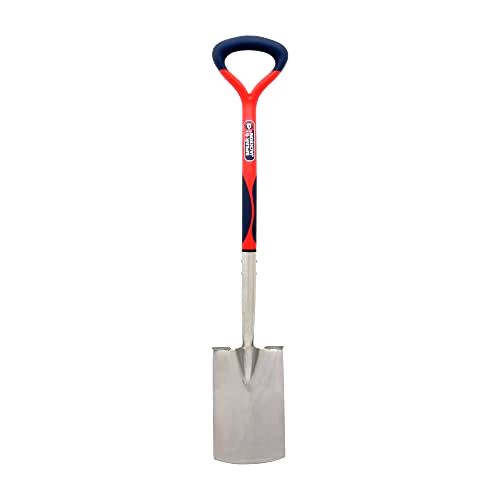
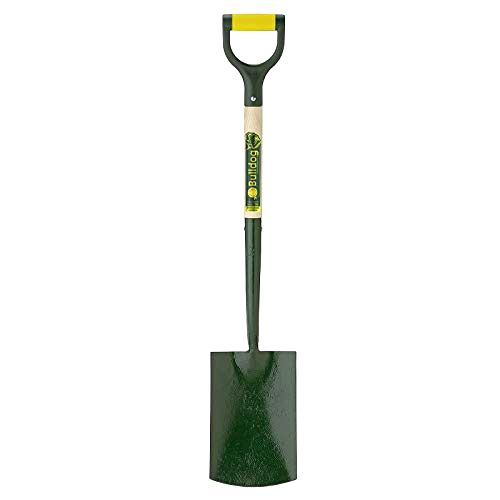
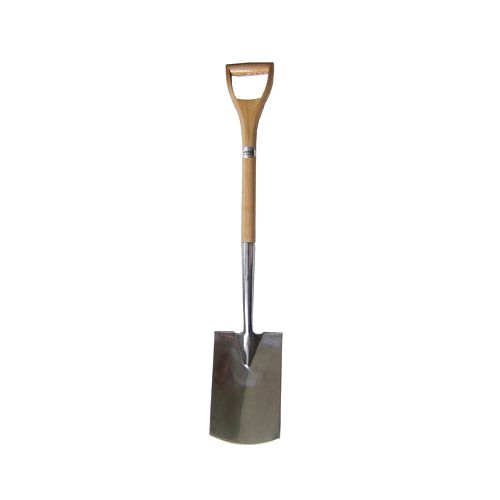
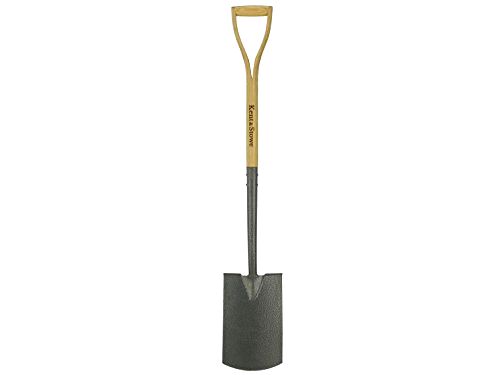

Share